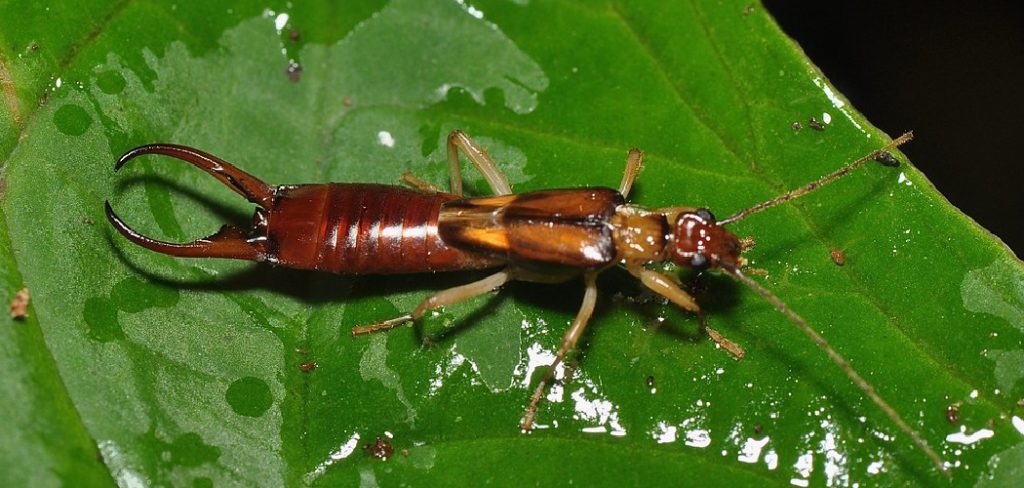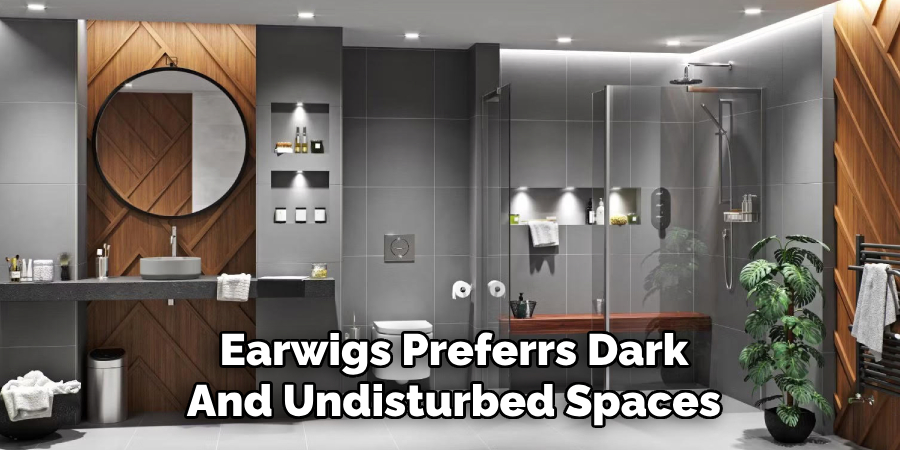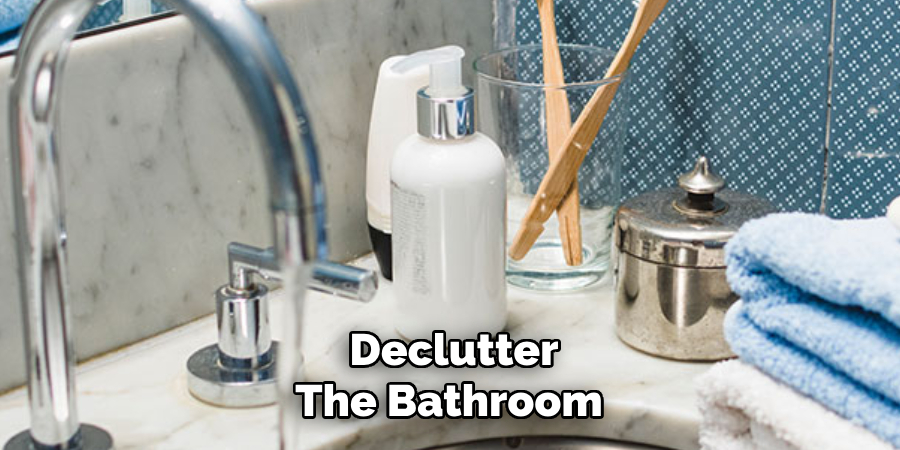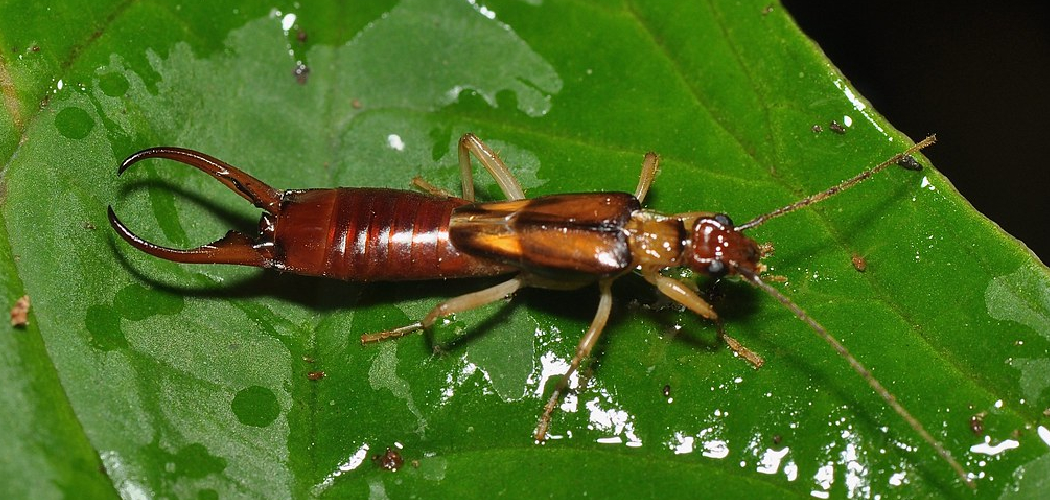Earwigs are small, brownish insects easily recognized by the pincers protruding from their abdomen. These nocturnal creatures are often found in damp, dark areas, making bathrooms a prime location for infestation. Bathrooms provide the ideal environment for earwigs due to the abundance of moisture, hidden crevices, and shelter they require to thrive. If left unchecked, these insects can become a nuisance, scuttling across floors or walls and potentially damaging indoor plants or other materials.

This article aims to provide practical advice on how to get rid of earwigs in bathroom areas by focusing on effective identification techniques, removal strategies, and preventive measures to ensure a pest-free home environment. Through a combination of proper maintenance, cleaning, and targeted repellents, controlling and preventing earwigs can be straightforward and achievable.
Identifying an Earwig Problem
What Earwigs Look Like
Earwigs are easily recognized by their distinctive appearance. They have elongated, flat bodies that are typically brown or reddish-brown, measuring about ½ to 1 inch in length. One of their most striking features is their pincers, or forceps-like appendages, which protrude from the rear of their abdomen. These pincers are more pronounced in males and can look intimidating, but earwigs are generally harmless to humans.
Signs of Infestation
A common indication of an earwig problem is spotting them, particularly in damp areas of the bathroom. They may be seen lurking in bathtubs, around drains, under sinks, or near other moist environments. Another sign of infestation is a musty or earthy odor, which can occur in areas where moisture accumulates and earwigs hide.
Where They Hide
Earwigs thrive in dark, moist spaces, making bathrooms a prime location for infestation. They can often be found hiding under bathroom mats, in the cracks and crevices of walls or tiles, behind toilets, or even inside cabinets. Wall gaps and spaces around plumbing are also common hiding spots. Identifying these areas is key to effectively dealing with an earwig problem.
Why Earwigs Are Attracted to Bathrooms
Earwigs are commonly drawn to bathrooms due to the ideal environmental conditions these spaces offer.
Moisture
Bathrooms provide a constant source of water and high humidity, which are essential for earwigs to survive. Leaky faucets, damp tiles, or shower condensation create an environment where these pests can thrive. They are particularly attracted to continuously moist areas that keep their bodies hydrated.
Dark, Undisturbed Areas
Earwigs are nocturnal by nature, preferring dark and undisturbed spaces to hide during the day. Bathrooms often have shaded corners, spaces under mats or rugs, and cluttered storage areas that serve as perfect hiding spots for these insects.

Entry Points
Bathrooms often provide multiple entry points for earwigs. Gaps around windows, spaces under doors, and drainpipes can serve as gateways for them to crawl in. Additionally, bathrooms located near basements, gardens, or other damp areas are particularly vulnerable, as these locations act as a natural habitat for earwigs to find their way indoors.
By understanding why earwigs are attracted to bathrooms, homeowners can take targeted steps to minimize the conditions that draw them in and prevent further infestations.
How to Get Rid of Earwigs in Bathroom Immediate Steps to Remove Earwigs
Dealing with an earwig infestation requires swift and effective measures. Follow these steps to eliminate them from your home, starting with your bathroom.
Manual Removal
Begin by catching and disposing of visible earwigs using a tissue or paper towel. For those hiding in cracks, under furniture, or in tight corners, a vacuum cleaner proves to be an efficient tool. Be sure to empty and clean the vacuum after use to avoid reintroducing them to your home.
Homemade Traps
Homemade traps are an eco-friendly way to lure and eliminate earwigs. Prepare a simple trap using a shallow container filled with a mixture of oil and soy sauce. The scent attracts earwigs, while the liquid traps and drowns them. Place these traps near areas where earwigs are frequently spotted, such as under sinks or near drains.
Insecticidal Sprays
Safe indoor insecticidal sprays can be highly effective against earwigs. Apply the spray along baseboards, around cracks, and in damp areas like corners, under cabinets, and near plumbing fixtures. Always follow product instructions carefully and ensure ventilation while using sprays.

Drain Cleaning
Earwigs sometimes breed or hide in drains. Flush drains with hot water, followed by a solution of vinegar, to sanitize and deter them. Regularly cleaning and maintaining your drains will help prevent future invasions.
By implementing these immediate steps, you can efficiently manage and remove earwigs from your bathroom and surrounding areas, ensuring a pest-free environment.
Long-Term Prevention Strategies
Reduce Moisture
Maintaining low humidity levels in your bathroom is crucial to preventing earwigs. Use a dehumidifier or install an exhaust fan to keep the space dry, especially after showers or baths. Address any leaks under sinks, around toilets, or in other plumbing areas promptly, as standing water or excess moisture creates an ideal environment for pests to thrive.
Seal Entry Points
Prevent earwigs from entering your bathroom by sealing off potential access points. Use caulk to fill cracks in walls, tiles, or around plumbing fixtures. Ensure doors and windows are properly sealed by installing sweeps and screens to block any gaps that pests could use to get indoors. Taking these measures will significantly reduce the chances of infestation.
Declutter the Bathroom
Clutter provides the perfect hiding spots for earwigs. Remove unnecessary items, such as old toiletries, unused towels, or stacks of paper materials, to make the bathroom less inviting to pests. Store essential bathroom supplies in sealed, moisture-proof containers to further deter earwigs from settling in. A tidy and organized bathroom is far less appealing to these pests.

Regular Cleaning
Keeping a consistent cleaning schedule is vital for long-term pest prevention. Wipe down damp surfaces, such as countertops and shower walls, regularly to prevent moisture buildup. Sweep and mop the floor to remove debris that can attract pests, and use disinfectants during cleaning to sanitize thoroughly. These habits will help create an unwelcoming environment for earwigs and other pests.
Natural and Chemical Repellents
Natural Solutions
Natural repellents are a safe and environmentally friendly way to deter pests like earwigs. Sprinkling diatomaceous earth around baseboards, corners, and other damp areas can be highly effective. This natural substance dehydrates pests without posing a significant risk to humans or pets. Additionally, essential oils such as tea tree, peppermint, or eucalyptus can serve as excellent deterrents. Simply dilute a few drops of your chosen oil in water and use it as a spray around entry points, baseboards, or moist areas where pests are likely to gather. These natural methods are non-toxic and can also leave your bathroom smelling fresh and clean.
Chemical Options
For more persistent infestations, chemical repellents may be necessary. Boric acid and insecticidal dust are two common options that work well when applied in cracks, corners, and behind bathroom fixtures. These substances disrupt the pests’ systems, effectively reducing their presence. However, chemicals should always be handled with caution, especially in homes with children or pets. Follow the manufacturer’s instructions carefully and restrict treated areas to ensure safety. While chemical solutions can be highly effective, consider them a secondary option after trying natural remedies for a more eco-conscious approach.
When to Call a Professional
There are times when professional pest control assistance becomes essential to address an infestation effectively. Persistent sightings of pests, even after employing traps and repellents, are a clear sign that the issue may be more severe than anticipated. Additionally, if the infestation starts spreading to other rooms or areas of the home, it indicates that immediate action is required to prevent further escalation.
Professionals bring expertise and specialized tools to handle such situations. They begin by thoroughly identifying the source of the infestation, enabling them to apply stronger, targeted insecticides that are often unavailable to the general public.

Beyond eliminating the pests, they also provide recommendations for long-term solutions, such as sealing entry points or making structural repairs to prevent future infestations. By calling a professional, homeowners can ensure a more comprehensive and lasting approach to pest control.
Conclusion
Effectively addressing an earwig problem requires a combination of methods, including controlling moisture, maintaining cleanliness, sealing cracks or entry points, and utilizing traps or natural repellents. Regularly inspecting your bathroom and ensuring proper maintenance can help prevent infestations before they start. Remember, early intervention is crucial—don’t ignore the first signs of trouble. For a comprehensive guide on how to get rid of earwigs in bathroom spaces, be proactive and adopt these preventive measures to keep your home pest-free. By combining these steps, you can create an environment that is less inviting to earwigs and maintain a comfortable living space.

